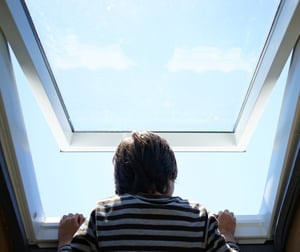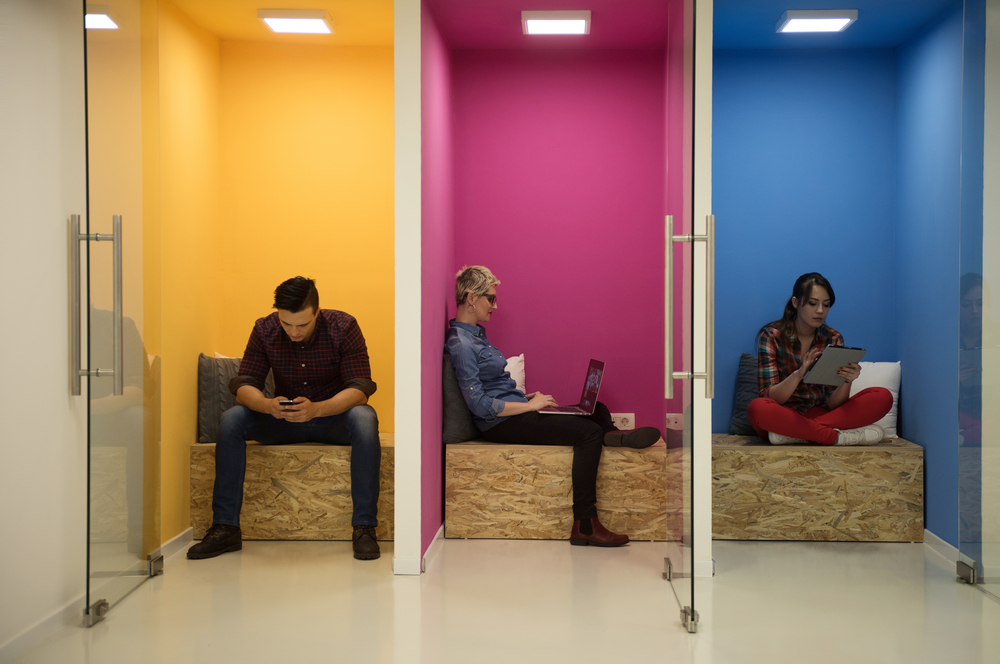
In 2017, the Chartered Institution of Building Services Engineers (CIBSE) published TM59: Design methodology for the assessment of overheating risk in homes, a...
TM59: Design methodology for the assessment of overheating risk in homes describes a methodology to assess whether a home stays comfortable in hot weather. It uses a mathematical model, allowing the design to be approved or altered depending on the results. This post describes the assessment procedure and reporting requirements.
It follows on from our previous post on the significance of TM59 to a developer and the compliance criteria.

Compliance with a TM59 assessment is the industry standard laid out by the Chartered Institution of Building Services Engineers (CIBSE). The full document is available for download [PDF] from the CIBSE website.
The assessment itself is a 12-stage process, which is carried out as follows:
A large development may have a number of dwellings: units containing a single household. In practice, a dwelling might be one flat in a block or half of a semi-detached house. It's not necessary to assess every dwelling, but the dwellings selected for assessment must selected by the same worst-case scenario principle that's used to  calculate occupancy. That means that the dwellings chosen for assessment should be the rooms most at risk of overheating. If they can stay comfortable, it's safe to assume that all the others will as well.
calculate occupancy. That means that the dwellings chosen for assessment should be the rooms most at risk of overheating. If they can stay comfortable, it's safe to assume that all the others will as well.
The selection must be justified in the final report, presumably in case someone's tempted to base the calculations on a ground-floor flat facing a large building that shades all the windows.
The criteria it suggests for identifying those worst-cases are:
Every room type has a different set of assumptions about how many people will be in it for what part of the day, and what they'll be doing in it to generate heat. For that reason, each selected unit is zoned by room type, such as kitchens, living rooms, bedrooms, etc.
Each building material has its own thermal mass and level of insulation, which needs to be modelled. Windows also need to have a figure calculated for how much solar heat they let in.
 4 Apply the occupancy profile
4 Apply the occupancy profileThis is where the assumptions about how many people are in a room at any given time, and what they're doing in there, come into play. The assumptions are drawn from a table in the TM59 document and applied to each type of room.
Communal corridors, such as those between the flats in a block, have an ambiguous status because they are not part of a dwelling but they are part of the building. They only need to be included in the analysis if community heating pipework runs through them, which may leak heat energy into them.
While the corridor temperatures are not considered to be part of the criteria for compliance, a corridor that is warmer than 28°C (82°F) for more than 3% of annual hours (191 hours in one year) should be described as a 'significant risk' in the final report.
On a day when overheating is a serious worry, the space heating won't be running. However, not even theoretical people are likely to give up on warm showers during a heatwave. However well they're insulated, hot  water pipes and heat interface units are likely to release some heat so must be included in the calculation.
water pipes and heat interface units are likely to release some heat so must be included in the calculation.
Opening windows and doors is the main means of natural ventilation, but they're not likely to be opened all the time. The TM59 calculations mandate some assumptions but allow for some flexibility in modelling what the theoretical people will do with the windows and doors, as long as their behaviour can be rationally explained in the final report.
The TM59 calculations assume that a room's windows are open at temperatures above 22°C (72°F) while the room is occupied, but closed when there's no one in. Fresh air loses its allure when it comes with a burglar. However, windows can be left open when no one is in if there's a security grille or some similar provision.
Another limitation is that windows can only be opened if they let in fresh air and not noise or exhaust fumes, so windows that would open on to major roads or railways are assumed to stay closed.
Doors between the rooms in a home can be assumed to be open during the day, allowing air to circulate, but should be assumed to be closed when everyone's asleep.
The TM59 calculations only consider shading devices that are part of the building's design. For example, they may account for a brise-soleil outside a block of flats, but they don't assume that the people who live in them will install their own curtains and draw them when the sun is blazing through the window.
 Blinds can be included in the calculations provided they are part of the building design, and provided that they don't interfere with the windows being opened. A blind might shade the room but it will also get in the way of any breeze coming through the window, so that has to be calculated.
Blinds can be included in the calculations provided they are part of the building design, and provided that they don't interfere with the windows being opened. A blind might shade the room but it will also get in the way of any breeze coming through the window, so that has to be calculated.
If using the blinds makes the difference between compliance and non-compliance, the analysis must be done without the blinds and included in the report.
The design should include a program for how the mechanical ventilation, such as extractor fans or mechanical ventilation with heat recovery (MVHR), should be operated, including the temperature it would be switched on at. The program must assume acoustic compliance: nothing can be running loudly enough to bother anyone in the room. If the system has a boost mode, to be used if a room is particularly hot, it cannot be incorporated into the calculations.
We all know we feel cooler in a breeze than in still air if we're sitting still. That's because we heat up the air around us and if it's got nowhere to go, we end up surrounded by an envelope of air that's warmer than the rest of the air in the room. At the same time, sweating cools us down through evaporative cooling: we conduct heat energy from our  body to the layer of sweat on our skin, which then evaporates into vapour to carry the heat away. Air can only carry so much vapour so the same envelope of air gets to the point where it can't carry any more. That's when we end up covered in an uncomfortable layer of sweat with nowhere to go.
body to the layer of sweat on our skin, which then evaporates into vapour to carry the heat away. Air can only carry so much vapour so the same envelope of air gets to the point where it can't carry any more. That's when we end up covered in an uncomfortable layer of sweat with nowhere to go.
Even a very slight breeze carries the over-heated, vapour-saturated air away and replaces it with fresh air that can soak up more heat energy and more vapour. The TM59 calculations assume an air speed of 0.1m/s that can be generated by mechanical ventilation or by opening the windows. A higher airspeed can be calculated if there's a ceiling fan, but no more than 0.8m/s. None of us want a howling gale blowing through our bedroom when we're trying to sleep.
Finally, the assessment needs a prediction of how hot the summers of the future are going to be. Overheating is likely to be a bigger problem for a building in the middle of Birmingham than on the Isle of Skye, but any building design needs to allow for summers to get hotter in the coming decades.
CIBSE produces predictions for what climate change will mean in different parts of Britain, which can be used to calculate the external air temperatures the building will have to cope with.
 The requirements mandated by TM59 are fairly lenient in that they're based on what CIBSE call moderately warm summers, or design standard year 1 (DSY1), and they only need to go as far as the 2020s rather than the warmer summers of future decades.
The requirements mandated by TM59 are fairly lenient in that they're based on what CIBSE call moderately warm summers, or design standard year 1 (DSY1), and they only need to go as far as the 2020s rather than the warmer summers of future decades.
TM59 recommends that the design takes into account what they call 'intense warm spells', meaning heatwaves, and also recommended that it takes the weather predictions for the 2050s and even the 2080s into account - a building constructed today isn't designed to fall down on New Year's Day 2030. However, the design only needs to keep within the design limits of a moderately warm summer in the 2020s to be compliant.
Having gathered all the figures, the next stage is to feed them into the model, which should return a result for every hour of that year in the 2020s that CIBSE has predicted, and see whether there are too many of them over the comfort temperature.
To be compliant, the report must detail not only the results of the TM59 assessment but must justify the approach to all of the previous steps. For example, it must explain why the property was classed as naturally or mechanically ventilated, why the rooms tested were selected and state which weather predictions were used.
If an initial analysis showed the building was non-compliant and the design was changed to make it compliant, the initial analysis needs to be included along with the design changes.
If you'd like to know any more about TM59 and how to comply with it, please ask us on the form below and we'll be happy to answer. Or you can arrange a call with one of our consultants to see how overheating might affect your project.

In 2017, the Chartered Institution of Building Services Engineers (CIBSE) published TM59: Design methodology for the assessment of overheating risk in homes, a...

In March 2020, the Chartered Institute for Building Service Engineers (CIBSE) published an update to their TM40 guidelines titled Health and Wellbeing in Building...